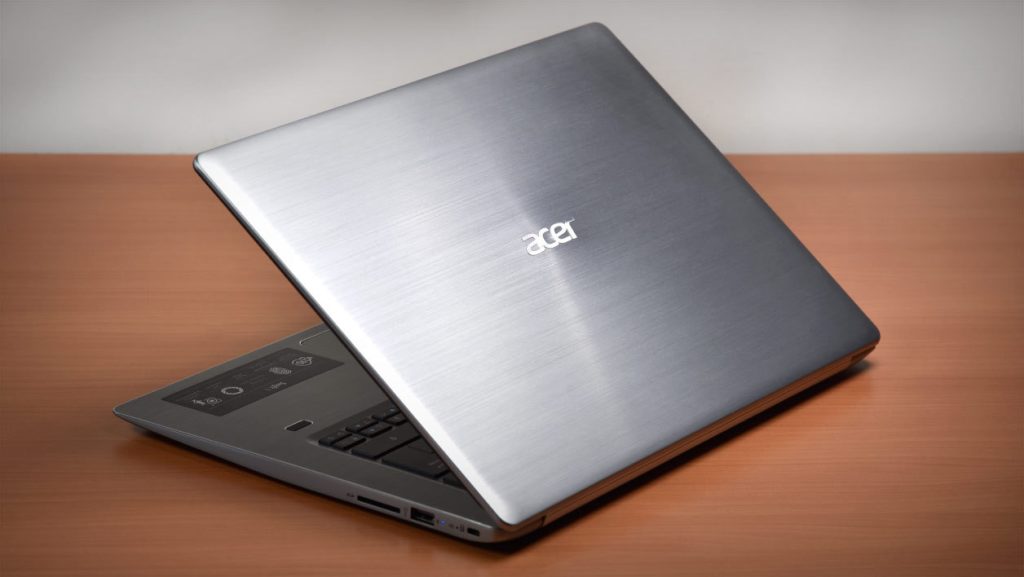
For a long time, laptops were judged on their speed and their storage capacity. The faster a laptop could run, and the more data it could store, the more expensive it was likely to be. Screen size and graphics capabilities were probably a secondary consideration. After assessing those attributes, the next thing a potential buyer might think about is how comfortable the keyboard is. You’d get a long way down the list of ‘must-haves’ before you started thinking about anything to do with the fan inside the case.
Times change, though, and so do the things we judge technology on. As we start the 2020s, the quality or speed of the processor inside your laptop has never been less important. That’s because we’re moving into the era of cloud computing. All your computer needs to have is a fast internet connection and a screen. So long as both of those things are present, it’s capable of connecting to a more powerful device somewhere else on the planet, and that device can carry out all of the heavy-duty processing work for it. That’s why people who’ve spent their entire lives buying laptops have recently started buying notepads instead.
This idea has been a long time coming, and it’s only through gaming that the concept has caught on. Google’s Stadia platform makes use of cloud processing to run high-performance games on low-performance systems. Google was, in turn, probably inspired by online slots websites. The basic premise of any online slots website is that it provides an end-user with access to Irish slots and hundreds of other games with different themes through one single point of access. The user doesn’t need to be in a casino, and they don’t need to have a cabinet at their end. All the processing is handled through the internet, and the process of playing online slots doesn’t put any strain on a user’s computer at all.
If we’re no longer judging laptops by the old methods, what should we judge them by? Screen size and graphics capabilities are arguably more important than ever before, and we’ll still want a reasonable about of storage space, but what should we look for beyond that? Is being waterproof a desirable laptop attribute? Acer certainly thinks so, and they’ve spent time and money developing a water-repelling fan for their latest ‘outdoor’ laptop. This isn’t just a fan that blows water back out the way it came; it’s a fan that turns to face all directions inside the laptop’s cases and expels the buildup of unwanted moisture. It doesn’t quite make the machine totally waterproof, but it’s a step forward in the evolution of water-resistant laptops.
The announcement of Acer’s new project was made a few days ago and came as part of a wider announcement concerning the company’s “Enduro” range of so-called rugged laptops, designed for people who either travel a lot or work in potentially dangerous environments. Aside from having water-resistant properties, they can also theoretically survive heavy impacts, being dropped onto hard surfaces, and extreme changes in temperature. The key to making a successful rugged laptop is to combine all of those qualities into a machine that’s still small enough to carry around with being encumbered, and Acer appears to have managed that based on the information we’ve seen thus far. The one attracting the most interest is the Enduro N3, which comes with the aforementioned fan and is scheduled to be released across most of the world by the end of June, with an American release expected to follow in August and a purchase price of around nine hundred dollars.
Rugged laptops are nothing new, and they’re not exclusive to Acer. The majority of well-known laptop manufacturers have ‘rugged’ options among their range, and thus far 2020 has been a good year for the release of such devices. What makes the new Acer laptop stand out – or, at least, what the company hopes will make it stand out – is the inclusion of the ‘Aquafan.’ Designed to expel dust as well as water particles, the fan is so powerful that it can protect the machine even if it’s exposed to the full force of a domestic shower, as Acer demonstrated during a press conference. The laptop appeared to be unharmed by the incident, and the keyboard’s underlighting system was still fully functional after the machine dried off.
While we sincerely doubt that any of our readers would ever intentionally expose their computers to a shower, this development is important because it provides us an insight into the way that manufacturers are thinking about the future. If they can no longer seduce the average consumer with more power or more speed, they need to find another angle, and reliability might well prove to be the best one. Most people reading this will have had a regrettable experience with a laptop they bought for a premium price, only to see it suffer mechanical issues within one or two years of their purchase. Some of us know the pain of dropping a laptop and knowing that it’s likely to be damaged beyond repair even before we pick it up. If manufacturers are able to build laptops that are able to survive such incidents reliably, durability might become the new benchmark for the laptops of the future.
If we’re right in the prediction we’ve just made, we might see laptops get larger rather than smaller in the years ahead. With less processing power needed and technology progressing quickly, we’ve seen laptops become thinner and flatter in recent years. In order to come with all the safety equipment a durable and resilient laptop needs, they’re going to have to become a little thicker and broader again. That means you might not want to throw your chunky old laptop bag away just yet.
Acer’s fan might not be the most exciting technological development this year, and it might not be a factor for you the next time you’re shopping for a new personal computer. It might herald a new age in manufacturing strategy though – and it means that the prospect of a completely waterproof laptop is moving closer. One day soon, we’ll be able to spill a coffee on our desks without crossing our fingers that none of it touched our keyboards!








